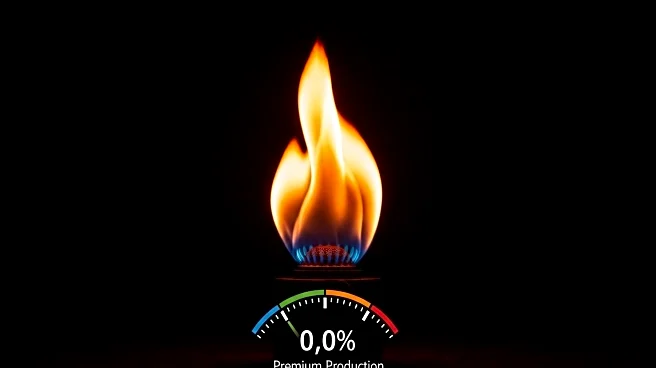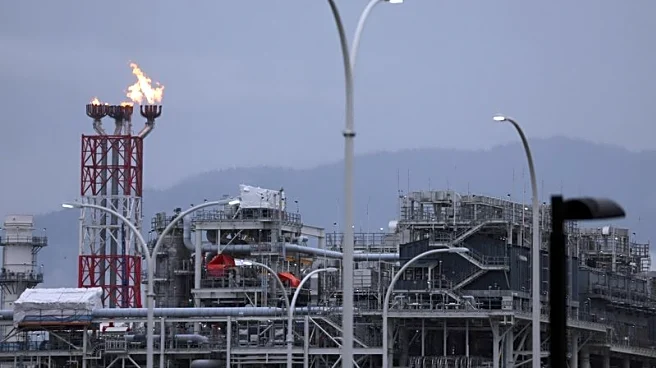What's Happening?
Canadian natural gas producers are facing unprecedented challenges as prices at the AECO Hub, the benchmark for natural gas in Canada, have plummeted to record lows. The daily spot price recently averaged minus 5 cents per million British thermal units (MMBtu), marking a significant downturn. This price drop is attributed to a combination of factors, including a warmer-than-usual winter, ample gas storage, and increased production in anticipation of rising demand from Canada's first LNG export facility, LNG Canada. In response, companies like Advantage Energy and ARC Resources have decided to curtail production to avoid financial losses. Advantage Energy CEO Mike Belenkie described the current pricing situation as the worst sustained prices seen, prompting aggressive shut-ins. ARC Resources has also reduced output at its Sunrise dry gas asset, effectively eliminating cash exposure to the low prices and preserving resources for more profitable periods.
Why It's Important?
The decision by Canadian natural gas producers to curtail production highlights the significant impact of fluctuating energy prices on the industry. These production cuts are a strategic move to mitigate financial losses during periods of low pricing, which can affect the profitability and operational stability of energy firms. The situation underscores the volatility of the natural gas market and the challenges faced by producers in maintaining economic viability. The curtailment of production could have broader implications for energy supply and pricing dynamics in North America, particularly as the region increasingly relies on Canadian natural gas imports. Additionally, the ramp-up of LNG Canada is expected to influence future pricing and production decisions, potentially stabilizing the market as demand increases.
What's Next?
Producers anticipate restoring full production once prices recover, which is expected later this year. This recovery is likely to coincide with the ramp-up of LNG Canada and the completion of seasonal pipeline maintenance. The industry will be closely monitoring market conditions and pricing trends to determine the optimal timing for resuming full operations. Stakeholders, including energy companies and investors, will be watching for signs of price stabilization and increased demand, which could signal a more favorable environment for natural gas production. The situation may also prompt discussions on long-term strategies to manage price volatility and ensure sustainable operations in the face of fluctuating market conditions.











